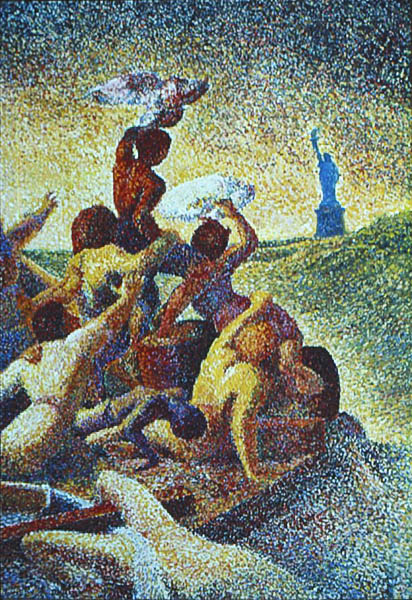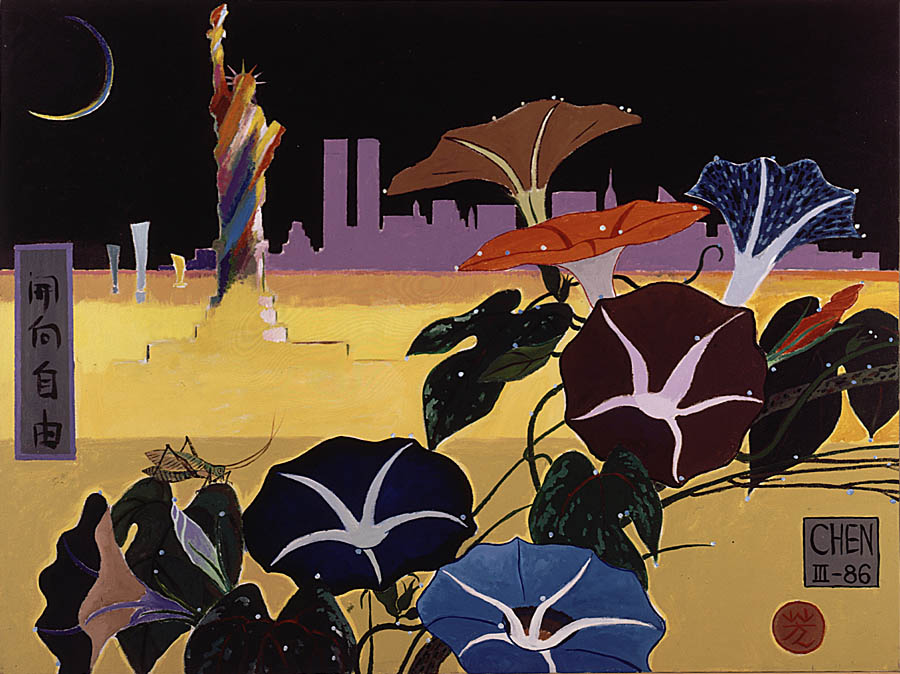 City Gleaners City Gleaners
#85051 72″ X 50″ ac
▪ J.F. Millet: “The Gleaners”, 1857. Louvre, Paris
▪ Gauguin: “And the Gold of their Bodies”, 1901. Museum d’Orsay, Paris
What a glorious way to close this commentary, with one of my favorite Chen paintings.One of the most urbane and well-informed artists of the nineteenth century Jean Francois Millet (1814-1875), did not immediately find public favor, especially with the French middle class, who viewed his canvases, which glorified the moral superiority of hard labor, as politically revolutionary.Chen sees a deep linkage between Liberty and religious experience, and he uses a number of Millet icons to show this. In “Praying in the New Land” he took two figures from Millet’s “Angelus”, which is named after the Latin prayer recited at the start of day, noon, and end of day, and placed them in the view of the Statue of Liberty.While not religious, “City Gleaners” is a devastating commentary. Chen freely uses three peasants from another Millet, the familiar “Gleaners (1857)”.Although the colors and tonal placements of the painting are lovely, these ladies have not chanted the Angelus, nor does their work seem ennobling. They are picking up the trash of a profligate society, scavenging cans from a dump. The figure on the right carries a totebag imprinted I LOVE NEW YORK. Do they scavenge the soft drink cans to clean up the mess of litterers, or are they gleaning to have something to sell? Take your choice. The image of Liberty standing on a Classic Coke can is delicious. It can never be said that Chen’s Neo-Iconography lacks humor.
by Lawrance Jeppson
|
|



